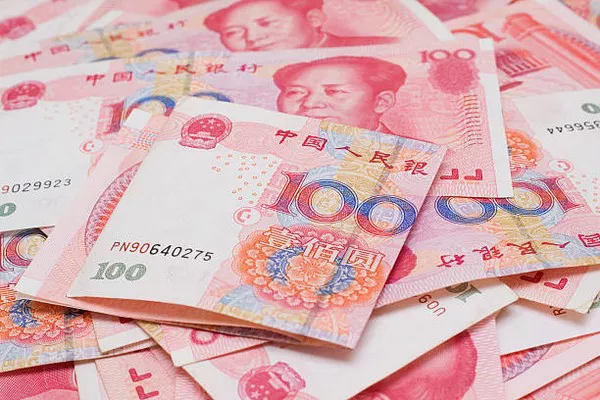The Chinese yuan (CNY), also known as the renminbi (RMB), plays a pivotal role in global finance and trade. As China’s economy continues to evolve, questions arise about the stability of its currency. In this comprehensive article, we explore the factors influencing the yuan’s value, its recent performance, and the challenges it faces.
The Yuan’s Recent Decline
The yuan has experienced significant fluctuations in recent times. Understanding the reasons behind its weakening trend is essential for investors, policymakers, and businesses. Let’s delve into the key aspects:
Factors Driving the Decline
Several factors contribute to the yuan’s recent depreciation:
a. U.S. Monetary Policy and Interest Rates
The U.S. Federal Reserve’s aggressive interest rate hikes have bolstered the dollar. As the dollar strengthens, the yuan weakens relative to it. The yuan’s decline is a natural response to the divergence in monetary policies between the U.S. and China.
b. Economic Challenges in China
China’s economy faces headwinds, including a property slump and strict COVID-19 controls. Balancing economic growth and currency stability is a delicate task for policymakers.
Managing the Yuan’s Stability
China’s central bank (the People’s Bank of China, PBOC) has taken measures to stabilize the yuan:
a. Setting Stronger Midpoint Fixings
The PBOC has consistently set midpoint rates higher than market estimates. This signals the central bank’s commitment to preventing rapid depreciation. The yuan’s resilience against a basket of currencies of major trading partners remains noteworthy.
b. Capital Controls and Currency Management
China has improved its capital controls, reducing the risk of disorderly depreciation. The yuan’s managed float allows for gradual adjustments while avoiding panic. The PBOC’s verbal assurances and actions demonstrate its intent to anchor the yuan within a reasonable range.
Outlook and Conclusion
The yuan’s stability remains a priority for China. While challenges persist, the PBOC’s proactive approach and prudent management provide confidence. As China’s economy adapts, the yuan’s path will continue to evolve, impacting global markets and trade.
Global Impact of Yuan’s Stability
The stability of the yuan extends beyond China’s borders, influencing global finance and trade. Several factors contribute to its global impact:
a. Role in Global Trade
China has emerged as a key player in global trade, with the yuan increasingly used in international transactions. The stability of the yuan is crucial for businesses engaged in cross-border trade, as fluctuations can impact pricing, profitability, and risk management strategies.
b. Implications for Emerging Markets
The stability of the yuan also has implications for other emerging market currencies. As one of the world’s largest economies, developments in China, including those related to its currency, can affect investor sentiment and capital flows to other emerging markets.
c. Geopolitical Considerations
The yuan’s stability is intertwined with geopolitical dynamics, particularly amid tensions between China and the United States. Any significant depreciation or instability in the yuan could exacerbate geopolitical tensions and lead to further trade disputes or financial market volatility.
d. Belt and Road Initiative (BRI)
China’s Belt and Road Initiative (BRI) aims to enhance connectivity and trade between China and countries across Asia, Africa, and Europe. The stability of the yuan is crucial for financing BRI projects and ensuring confidence among participating countries and investors.
Challenges to Yuan’s Stability
Despite efforts to maintain stability, the yuan faces several challenges that could undermine its value and credibility:
a. Structural Imbalances
China’s economy continues to grapple with structural imbalances, including high debt levels, overcapacity in certain industries, and demographic challenges. These structural issues could weigh on economic growth prospects and, consequently, the stability of the yuan.
b. Financial Risks
The rapid expansion of China’s shadow banking sector and the proliferation of complex financial products pose risks to financial stability. Any disruptions in the financial system could spill over into currency markets and affect the yuan’s value.
c. External Pressures
External factors, such as shifts in global trade dynamics, geopolitical tensions, and changes in investor sentiment, can exert pressure on the yuan. China’s ability to navigate these external pressures while maintaining currency stability is crucial for its economic resilience.
d. Technological Disruptions
Advancements in financial technology (fintech) and the rise of digital currencies pose both opportunities and challenges for the yuan. China’s efforts to develop its central bank digital currency (CBDC) could reshape the monetary landscape and influence the internationalization of the yuan.
Conclusion
The stability of the yuan is of paramount importance for China’s economic resilience and its role in the global economy. While the yuan faces various challenges, including external pressures and structural imbalances, China’s proactive measures and prudent management by the PBOC provide a foundation for stability. Going forward, continued reforms, effective risk management, and strategic initiatives will be essential to ensure the yuan’s stability and enhance its global standing.


